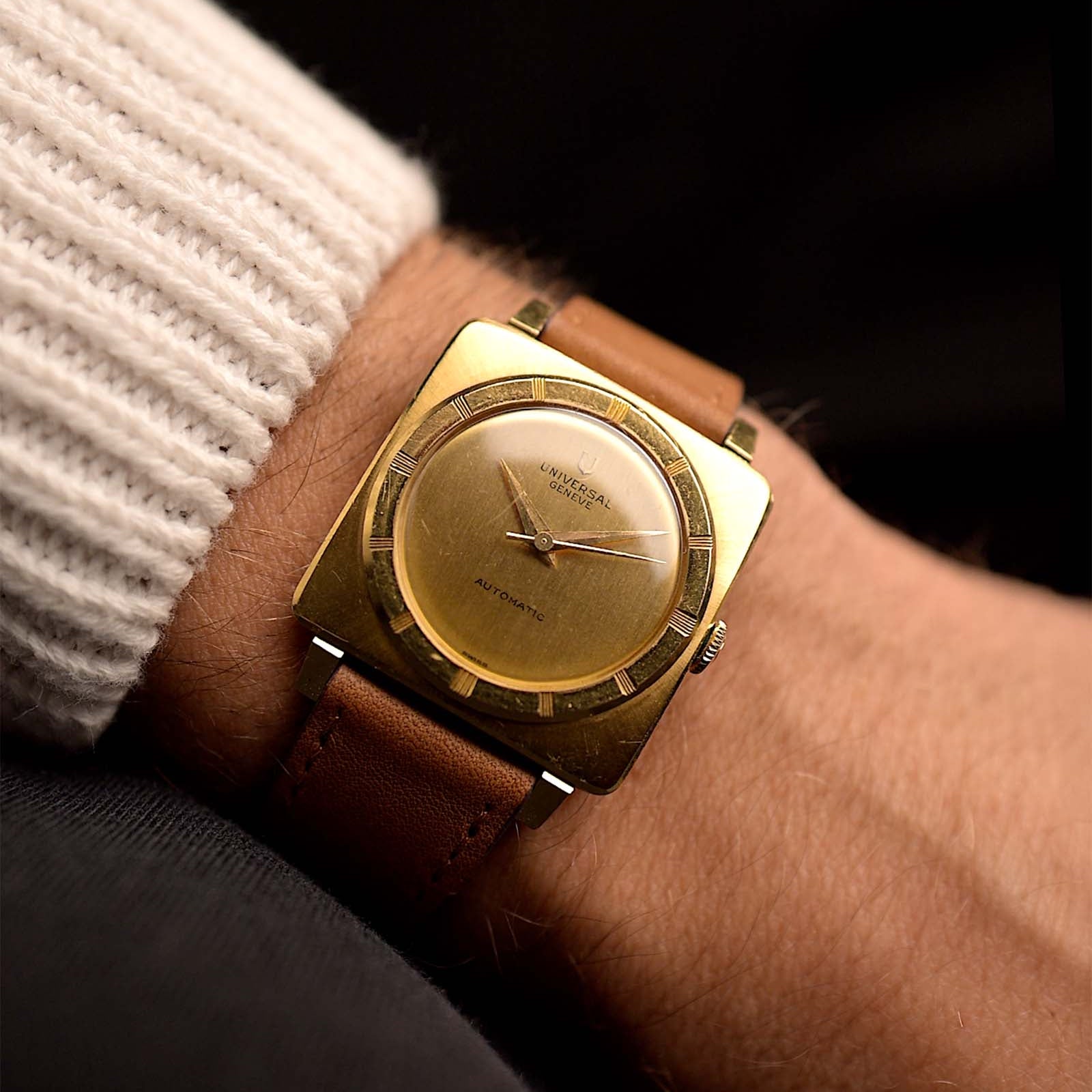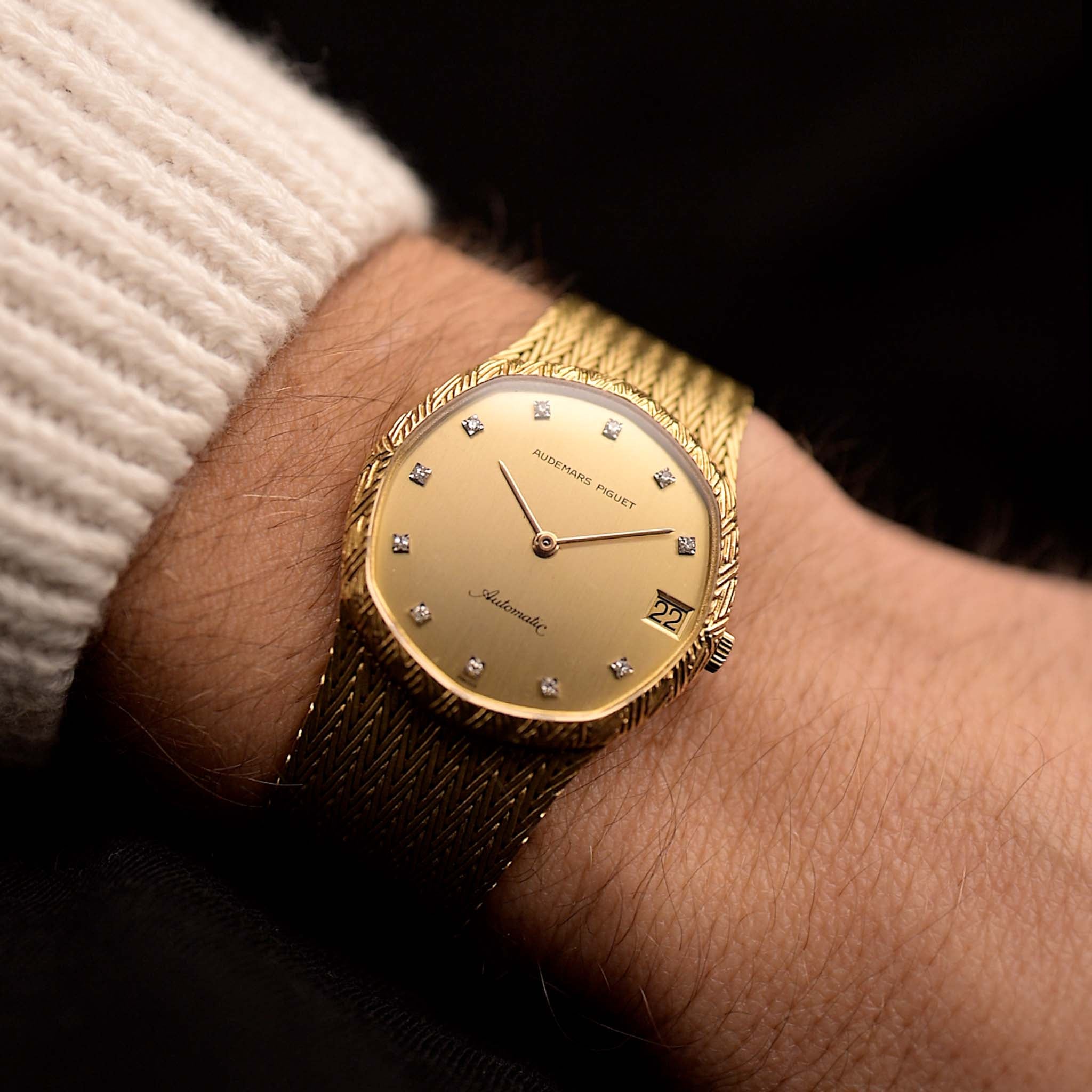This is part II of the series and it is all about color. The 1950s were the time of dress watches, but that barely says it all. The dial is what speaks to you and the color sets the tone. Silver and white dials are clean, black is elegant and understated, blue is the sporty modern variation and golden dials say here I am.
September 7, 2021
Watches of the 1950s - Dial Color
 Marcus Siems @siemswatches
Marcus Siems @siemswatches
Collector, Author, Data Analyst
Let’s talk about time. How did the watch world look like back in the post-war era of the Fifties? And I mean not only the timeless icons everybody remembers but the watch market in its entirety. Which design elements were the frontrunners of the time? In this series I want to answer this question with the loupe of quantitative data-analysis and data from over 2500 watches publicly listed on chrono24[1], summarizing the last 80 years of watchmaking.
 The 1950s are a dress watch epoch. With 60% of the market volume it is by far the most popular watch type of the time. Photo @goldammer.me
The 1950s are a dress watch epoch. With 60% of the market volume it is by far the most popular watch type of the time. Photo @goldammer.me
This is the second part of the series and by now we’ve seen that the body of a 1950s timepiece seems to be elegant, dressy, sophisticated. So let’s have a closer look at the face of the decade. Of course I’m speaking about the dial color. This feature quite literally sets the tone for the overall mood of the watch. White and silver dials are clean, black is elegant and understated, blue is the sporty modern variation and golden dials say here I am. Particularly black dials seem to have enjoyed large popularity until today. And indeed most of the iconic timepieces I introduced - The Submariner, the Speedmaster & the Polerouter - originally featured a black dial[2,3,4].
 Figure 1. Distribution of dial colors between 1940 and 1975. Classic white dials are most popular in the 1950s. Similar as with utility-type watches, black colored dials dip in their distribution throughout the decade. So far the dress watch with a white dial is the 1950s archetype.
Figure 1. Distribution of dial colors between 1940 and 1975. Classic white dials are most popular in the 1950s. Similar as with utility-type watches, black colored dials dip in their distribution throughout the decade. So far the dress watch with a white dial is the 1950s archetype.
Still, the 1950s prototypical watch had a very different appearance. Most noticeably, the watch world back in the days was still colored in black and white, no Technicolor on the horizon just yet. For the 1950s golden, silver and blue dials barely played in the supporting cast. They combined for less than 20% of the dials of the time.
The gentlemen clearly liked to sport clean and glaring white dials. Most interestingly, white and black dials appear to follow completely opposing trajectories between 1940 and 1975. What I mean is, when black dials were popular, white dials were not and vice versa. Black definitely is the color for most of the 20th century… Just not from 1945 to 1960. On the other hand, white dials being very much common throughout the decades as well yet clearly spiking in the 1950s.
But why did the use of black dials dip in that epoch? Here, the utility for particular colors might be an explanation and black plays a very prominent role. Apart from its elegant appearance and the design component black dials also serve a purpose. The dark background boosts legibility, particularly when luminous materials are applied. This is of advantage for almost any tool-watch. One example, underwater dive watches benefit from the increased contrast of lume on a black surface. Similarly, during World War II black dials were the standard for almost all military mandated watches[5,6]. Again luminous materials were one key component here and additionally bright dial might give your position away and alarm the enemy.
 Black dialed watches - particularly with military background - are trending downwards in the 1950s. Photo @goldammer.me
Black dialed watches - particularly with military background - are trending downwards in the 1950s. Photo @goldammer.me
Coming back to our decade and applying this knowledge we might understand our data a little better: The 1950s dial color is something special because first, our modern day perspective of tool-watches was still a dream of the future, an evolving trend. I’ve shown you in the last article that dive watches and other tool-watches were just arriving at the mass-market in the mid 1950s. Thus, the inherent need for a black background was sparse.
Second, looking into the past of the 1950s we see the necessity of black dials during WWII; not only by color a very dark time. Hence, fashion-wise white dials are as far away from the war as possible. Switching back to a clear white surface might be the perfect symbol of a new beginning. Everyone needed some hope, even if it was just irradiating from the wrist. And combine this with the clear design language of the Bauhaus school and you got yourself a new trend. Putting all these pieces together, white dials actually make sense: purposefully designed for bright daylight.
If I haven’t lost you until now, you might have learnt that the 1950s gentleman likes to wear his dress watch with a white dial, the color of the hour. But if we look at our example watch it still looks rather naked. Well let’s put some hands on it to cover up. Next stop: Watch hands.
Check out the the other parts of the series here:
Part I: A Matter of Style
Part II: Dial Color
Part III: Hot Hands
Part IV: Hour Marker
References
[1] Watches from Chrono24, extracted 2020 Nov. 29th; Karlsruhe, Germany;
[2] In-Depth: History of the Rolex Submariner – Part 1, The Early References; Tom Mulraney, Monochrome;
https://monochrome-watches.com/rolex-submariner-history-part-1-the-early-references/
[3] The Omega Speedmaster history; Alessandro Mazzardo, Time And Watches;
https://www.timeandwatches.com/p/history-of-omega-speedmaster.html
[4] Universal Polerouter: One Of The Last Affordable Icons; Lorenzo Maillard, europa star | Watch Files;
[5] A Brief Guide to the Iconic Military Watches of World War II, Mike Johnson, 60clicks;
https://www.60clicks.com/ww2-military-watch-guide/
[6] 10 important Military Watches from World War II; Oren Hartov, Gearpatrol;
https://www.gearpatrol.com/watches/a33393045/important-military-watches-of-wwii/
All rights on text and graphics reserved to the Author




























1 comment
Marcus did an absolute great job on these articles, so much information in such a short article!
Reading things I’ve never heard of seen. Love to read the following pieces!
Leave a comment